20th Arrondissement
Belleville, Ménilmontant
Belleville‐Ménilmontant has long been a preferred site of carousing, dancing, art and music‐making, and leftwing political activity. This arrondissement can lay claim to being the birthplace of Edith Piaf as well as Guy Debord, the resting place of Balzac, Molière and Oscar Wilde, and the site of some of the bloodiest resistance of the 1871 Paris Commune. Today, it is arguably the city’s most vibrant neighborhood, filled with cutting edge artists’ ateliers and galleries, live music venues, literature collectives, and nightlife – not to mention it boasts one of Paris’ most beautiful scenic overlooks.
Begin at Metro Belleville, on the number 2 or 11 line, the corner of Boulevard de la Villette/Boulevard de Ménilmontant (it changes names depending on which way you turn at the corner) and Rue de Belleville (Rue du Faubourg du Temple in the eastern direction). On this corner you are in the heart of a little Asian neighborhood, with the great “President” Chinese restaurant on one corner and a line of Asian restaurants and shops rising up from the other one. Belleville‐Ménilmontant is scruffy, so if chic boutiques and Academie‐française style French is what you’re after, better head to the 16th.
On this same corner looking down away from the hill that Rue de Belleville climbs, on some days you will see a hurly burly market, full of colorful characters and products from near and far. North African pastries and exotic fruits and vegetables from Africa and Asia are a specialty.
Read moreStart walking up the Rue de Belleville hill, and notice the Chinese restaurants lining the street with the full duck and pork laqués glistening from hooks in the windows. This is Chinese BBQ (and Paris’ unofficial second Chinatown) at its best, for under 10 euros, guaranteed. But you’ll also find plenty of good Vietnamese and Thai places on this very same street. If you like Asian cooking at home, duck into one of the many Asian grocers to find ingredients you can’t find elsewhere. I go there for lemongrass that goes in my Thai Lemongrass Chicken Soup.
Before the late 19th century Belleville was actually known as Courtille, coming from a Picardien name for a place where ordinary people could have outdoor parties. That was the identity of Belleville in the 19th century, full of beer gardens, raucous picnics and dancehalls. Its dancing and party scene was briefly feted in the award‐winning film The Triplettes of Belleville.
In the film, the tripelettes sing:
(Allez les filles, allons…)
Swinging Belleville rendezvous
Marathon dancing doum dilouuu
Vaudou Cancan, balais tabouuu
Au Belleville swinging rendezvous
That chorus pretty much sizes up its origins, but if a warm night on the Belleville terrasses is representative, the neighborhood hasn’t lost much kick.
The once famous 19th century dancehall, Folie‐Dénoyez even has a city of Paris historical marker on the street, explaining its bacchanal past. Next door to the historical marker is a bar haunt for village personalities lecturing on George Sand or Brassens, talking politics, sketching customers, playing music; its worn tables lacquered with cabaret posters, magazine and newspaper articles; its garish neon pink lights beaming a splash of Vegas onto the sidewalk packed with people from all walks of life; its name a remnant of the quarter’s rambunctious past— Aux Folies.
Aux Folies is the home of one of the most convivial bar/terrasses in the city, young and old enjoying the cheap drinks, affable barmen and the spontaneous conversations and friendships that are made in its tight quarters.
Belleville‐Ménilmontant has some of the most interesting murals (and graffiti art) in Paris, so be sure to keep an eye on the walls around the otherwise fairly non‐descript architecture.
As you climb the Rue de Belleville, on your right you’ll quickly come to la Place Frehel, and looking up to your right you’ll find (unless the mural has rotated) a giant rendition of a spiffy swingin’ (actually kneelin’) 1920s Belleville beau, bedecked in his bowler.
Proceed up to Rue Julien Lacroix. A kind of square exists on the corner where an old building was demolished. Now on the side of the building looking down on the little square is another mural. It features a man painting a slogan on what appears to be a blackboard: Il faut se mefier des mots («Don’t trust words.»).
Those who have seen the wildly entertaining artifact in the Centre Pompidou museum “Le Magasin de Ben” will recognize the mural as a homage to Ben. The same square is characteristic of Belleville Ménilmontant’s off-kilter artistic bent.
The first door on the right if one turns right on Rue Julien Lacroix is a Cultural Center Café. They have little leftist spectacles inside and plenty of plastic patio chairs outside on the square for a cheap coffee or beer and bit of relaxing people‐watching.
Walk another block down Rue Julien Lacroix to number 93 and you’re at Krung Thep, an almost too cozy little Thai restaurant with a highly regarded menu. Try the fish wrapped in banana leaves. (Were you to continue up the Belleville hill, you would cross at 72 Rue de Belleville, the birthplace of Edith Piaf—not inside the building there, but on the steps on a policeman’s cape to be precise.)
Walk down Julien Lacroix until you run into a park. This is the Parc de Belleville, the second highest natural point in Paris, after Montmartre. Wander up through this beautifully terraced, rose‐filled park, with its cascading fountain and wonderful playground that children frolic in during the summer.
Towards the top you’ll run into a small museum, La Maison de l’Air. Here you will find kites and plenty of interactive gadgets, all explaining the seriousness of the relationship between the air and the city’s living beings. Exit the museum and climb to the top of the park, where you will find a kind of gazebo with one of the most spectacularly uncompromised views of the city below. Dusk is a wonderful time to pass there, and by night, on the hour you get a wonderful view of the sparkling Tour Eiffel.
When you’ve had your gulp of the sublime turn around 180 degrees and walk forward a few meters. In warmer months you’ll see the pleasant little terrace of the O Paris café, which offers reasonably priced Leffe and Hoegaarden on draft, and simple meat and cheese plates for a perfect apéro to enjoy while the sun dips into the scenic horizon. On colder days, the bar has occasional “spectacles,” from poetry readings to jazz.
Now walk down Rue des Envierges away from the Parc de Belleville.
Quickly on your right you’ll run into Le Vieux Belleville, a kind of time travel back to the guingette days of accordions, dancing, and absinthe. Here you’ll get a correct traditional French menu and an accordionist who hands out lyrics to all the tables. No matter if you don’t speak much French, you’ll at least sing it by the end of the night.
Further down Rue des Envierges at 41 is Chez Cosette, a musical bar à vins, usually featuring jazz or folk. Two steps away is the well preserved, secluded intersection of Rues des Envierges, Cascades, Couronnes, and La Mare. All of them are fun for playing le flaneur. These narrow cobblestone streets are the former paths between small vineyards that dotted this great Belleville-Ménilmontant hill.
Unlike most of Paris’s 19th century demolition of small streets to make way for the Haussmanian boulevards, more resistant to leftist revolutionary barricades, the Belleville‐Ménilmontant streets were largely untouched. It was until recently home to a plethora of old workshops and is now full of artist studios.
In mid‐May watch out for the Belleville artist open studios. I suggest taking Rue des Cascades. Some of it is charming, almost Disneyesque, while towards the end of it near the intersection with Rue de Ménilmontant the public housing is garish.
At 48 Rue des Cascades, looking up towards the roof, you’ll see a lamp with three top hats on it. This is the unique restaurant‐music bar Les Trois Chapeaux (the three hats). It is uniquely decorated with music instruments and old posters, but most patrons go for the warm ambience, the jocular owner, a wide variety of tasty couscous and tajines, and surprisingly good (and sometimes bad) jazz and traditional French chansons. Once again, you get the feel of the traditional, scruffy artistic and festive neighborhood. The 7‐10 euro tajines and under 4 euro beer testify to an overall experience literally aimed at the starving artist. Popping or stumbling back out onto Rue des Cascades, you continue toward Rue de Ménilmontant.
Ménilmontant
At the intersection of Rue des Cascades and Rue de Ménilmontant, turn left and walk up the hill one short block. On your left will be the Rue de l’Ermitage. If you take this street you’ll fall upon a beautiful little theatre space called the Studio de l’Ermitage. It hosts an array of fun artistic events, from expos to all genres of music concerts and theatre. Like the Zebre de Belleville on Boulevard de Belleville, it is a small theatre with a square center that has a second floor of seats built around it.
If you continue past the Studio you’ll find what looks like a villa lost in time. Even narrower walking streets and little houses mixed in postmodern fashion with some of the city’s best and frequently rotating graffiti art.
Turning back to the corner of Ménilmontant and Rue de l’Ermitage, you cross Rue de Ménilmontant and now you’re on the musically hot strip that is Rue Boyer.
On the corner is the Café des Sports, dripping with hipsters, teens and gray‐hairs alike. They have local up‐and-coming music of the indie rock to hip‐hop sort, and electro‐leaning djs on many nights after ten. Walk down a couple more meters and you’ll find one of the most important venues for rock, experimental rock and pop and subgenres—La Maroquinerie.
Artists like Billy Bragg, the Constantines, Polysics, The Futureheads, and Vampire Weekend have played there. The Maroquinerie also has a wonderful courtyard terrasse, reasonable and tasty cocktails and draft beers, and a fairly hefty wine menu. They sometimes have djs in the restaurant‐ bar area, which is quite spacious.
Two doors down Rue Boyer from La Maroquinerie is another important music and performing arts space, La Bellevilloise. The Bellevilloise boasts a large terrasse, spacious dining and bar areas, and a downstairs concert hall, also big. In another life it was home to a Marxist‐influenced cooperative movement whose members enjoyed stores, a library, and cultural events. It was active through WWII. The remarkable building was built in 1927. Now we backtrack to Rue de Ménilmontant again and descend down the hill.
Walking Tour #2
Rue de Ménilmontant and its side streets offer more of the neighborhood’s beloved murals. On the corner of rue Henri Chevreau and Rue de la Mare is a mural by the stencil artist Nemo with his brand image of a black silhouette of a man in a bowler hat, above him dangles a giant red balloon. The mural is an homage to his beloved neighborhood and to the 1956 award‐winning film The Red Balloon by Albert La-Morisse.
Walking back to the Rue de Ménilmontant and going down to number 68, one finds a famous mural painted by Jérôme Mesnager in 1995. It consists of his typical rounded white skeletons, five of them, joined hands and dancing in a circle. Above them are notes of music symbolizing communal song and dance so closely associated with the area, and the words: C’est nous les gars d’Ménilmontant («We’re the fellas of Ménilmontant»). Just above the Mesnager mural on the corner of Rue Sorbier is a lively terrasse (saran‐wrapped in winter) called Les Entrepot’s. They have dependable French fare at equally fair prices. Stop there to recharge your batteries with a drink or something more nourishing.
When you’re ready to hit the pavement again, continue back down Rue de Ménilmontant, and a couple of blocks from the intersection with the Boulevard by the same name, is another Nemo. This time it’s his black bowler man on a bicycle on a tightrope. Look off to the two side streets, which house numerous bars, cafés and restaurants including the award-winning (yet still extremely reasonably priced) Roseval.
Continue down Boulevard de Ménilmontant, and the first street on your left is the buzzing little Rue des Panoyaux. This street is home to a leftist book shop with great vintage posters of local music shows, a couple of rock bars, and the tranquil but large terrasse of bar Lou Pascalou, couched in the bend of the street to the right, and featuring regular jazz performances. Directly across the street from Lou Pascalou is a restaurant called La Boulangerie. If nothing else, walk in and appreciate its colorful and well‐preserved old tile floor. The menu puts a little pizzazz into traditional French cuisine, and they have an impressive stock of wines and digestifs.
Ending your tour of Belleville-Ménilmontant track back twenty seconds down Rue des Panoyaux to Boulevard de Ménilmontant. Take a left and walk five minutes to the famous Père Lachaise cemetery. On the way, you’ll pass tempting hookah bars and cheap couscous restaurants, and right before the cemetery you’ll fall upon La Mère Lachaise, a hip restaurant with a reliably solid menu for the price.
Père Lachaise is the largest cemetery in Paris and the resting place of Jim Morrison, the Communards, Oscar Wilde, Balzac, Moliére, and La Fontaine, to name but a few. Established by Napoleon in 1804, it has become world famous. If you’re into dead French illuminati, or the Doors, this is a pilgrimage for you. Bring a piece of white butcher paper and a crayon. Place butcher paper over tombstone’s lettering and rub paper vigorously with a bright crayon—voila one of the coolest framed DIY art items in your living room.
Back down the bottom of the hill turn left down Boulevard de Ménilmontant. You’ll pass terrasses teeming with hipsters entertained by itinerant firebreathers, Bob Dylan imitators, and oud‐players. My favorite is Le Soleil.
One should add that Belleville‐Ménilmontant has long been a quartier populaire, and a hotbed of radically progressive political movements from St. Simonians to Communists. Père Lachaise in particular is the site where 147 Communards, the last defenders of the workers’ district of Belleville, were executed on 28 May 1871 — the last day of the “Bloody Week” (Semaine Sanglante) in which the Paris Commune was crushed.
After that week, the cemetery gained a special importance to the political left in France and globally, since leftists around the world make pilgrimages there and drop roses and wreaths at the foot of the execution wall. The annual memorials there have long attracted thousands who pay respect (as many as 600,000 in 1936). The population of Belleville‐Ménilmontant is recorded to have dropped from 50,000 to 20,000 in the bloody month of May 1871. While the neighborhood has changed a great deal since the 1870s it has retained a popular, creative, and radical vibe. For those with similar qualities, artists and/ or radicals, this is the neighborhood to haunt.
… Je suis pas poète
Mais je suis ému,
Et dans ma tête
Y a des souvenirs jamais perdus
Un soir d’hiver
Une musique
Des yeux très doux les tiens maman
Quel beau roman d’amour poétique
Et pathétique
Ménilmontant !
Charles Trenet (1938), “Ménilmontant”
RESTAURANTS
Krung Thep
93 Rue Julien Lacroix
01 43 66 83 74
Hours 7/7 Mon, Tues 6pm-midnight; W-Sun 12-3pm, 6-midnight
Metro: Belleville (2,11)
Salon de Thé Wenzhou (Chinese food, not a tea room)
24 Rue de Belleville
01 46 36 56 33
Hours 10am-8pm
Metro: Belleville (2,11)
O Paris
1 Rue des Envierges
01 43 66 38 54
Hours M-W 10.30am-2am, Th-Sun 10am-2am
Metro: Pyrenées (11), Couronnes (2), Belleville (2,11)
Le Vieux Belleville
12 Rue des Envierges
01 42 62 92 26
Hours M-F 12-3pm, 8pm-late; Sat, Sun 8pm-2am
Metro: Pyrenées (11), Couronnes (2), Belleville (2,11)
Les Trois Chapeaux
48 Rue des Cascades
01 46 30 90 06
Hours 7/7 3pm-2am
Metro: Pyrenées (11), Jourdain (11)
La Maroquinerie
23 Rue Boyer
01 43 33 35 05
Hours 7/7 Resturant 7.30-10.30pm and shows according to programme
Metro: Gambetta (3), Ménilmontant (2)
L’Entrepot’s
2 Rue Sorbier
01 43 49 59 17
Hours M-Sat 7am-2am
Metro: Ménilmontant (2), Couronnes (3)
Lou Pascalou
14 Rue des Panoyaux
01 46 36 78 10
Hours 7/7 9am-2am
Metro: Ménilmontant (2), Père Lachaise (3)
La Mère Lachaise
78 Boulevard de Ménilmontant
01 47 97 61 60
Hours Tues-Fri 9am-2am, Sat 10am-2am
Metro: Père Lachaise (3)
Café des Sports
94 Rue de Ménilmontant
01 46 36 48 18
Hours 7/7 10am-2am
Metro: Gambetta (3), Pyrenées (11)
La Bellevilloise
19 Rue Boyer
01 46 36 07 07
Hours W-Th 7pm-1am, Fri 7pm-2am, Sat 11am/6pm – 2am (depending on programme), Sun 11.30am – 5pm/midnight (depending on programme)
Metro: Gambetta (3), Ménilmontant (2)
Le Soleil
136 Boulevard de Ménilmontant
01 46 36 47 44
Hours 7/7 8am-2am
Metro: Ménilmontant (@), Père Lachaise (3)
Roseval
1 Rue Eupatoria
09 53 56 24 14
Hours M-F Dinner
Metro: Ménilmontant (2)
Received Le Fooding’s award for best new table in 2012 – go and see what all the fuss is about. Bookings necessary.
Eva Pritsky
5 Rue Eupatoria
01 44 62 20 69
Hours Tues-Sat 5pm-2am
Metro: Ménilmontant
Visit Eva’s cave of wonders and bar and sample the libertarian spirit of Ménilmontant.
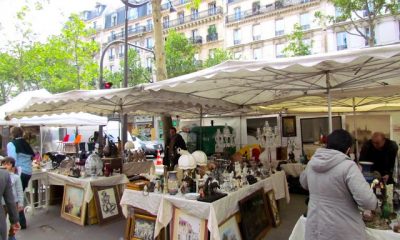
Vide Greniers and Brocantes in Paris
This is a type of French garage sale (or car boot/jumble sale if you’re British)– the phrase vide grenier means”attic clearance”. Read more
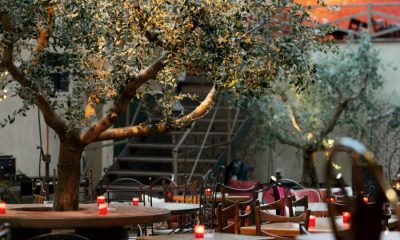
La Bellevilloise
La Bellevilloise in Gambetta is the kind of community-driven performance space Paris excels at. A café, terrace and lots of gigs with local and international acts. La Bellevilloise 19-21 Rue Boyer, 20th Ph: 01 46… Read more
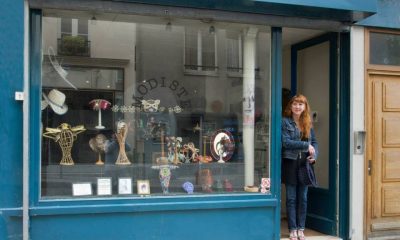
Estelle Ramousse – Made to Measure Hats
The place to have your hat made in Paris. Estelle Ramousse has worked for years in the theatre and has an artist’s eye for the suave and sophisticated, the colourful and eccentric. From a traditional… Read more
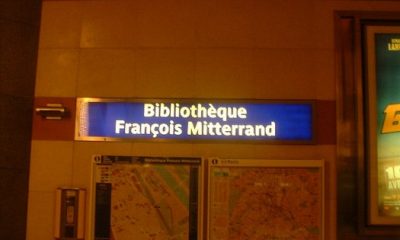
Paris Libraries
Image: Matthew Black My world expanded somewhat when I found out about Paris’s libraries. And all for free. There are even specialist Libraries in different arrondissement – 1er Music, 4eme Fine Arts, Graphic Arts, History of… Read more
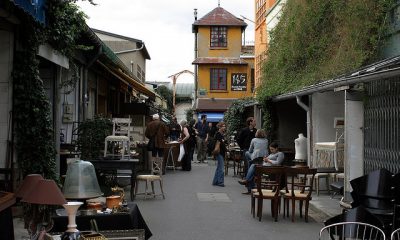
Marché aux Puces/The Best Flea Markets in Paris
Image: Jori Avlis Flea markets are a Paris institution. The love of antiques and vintage items – not to mention the treasure trove that some people with family heirlooms are sitting on – make these… Read more
